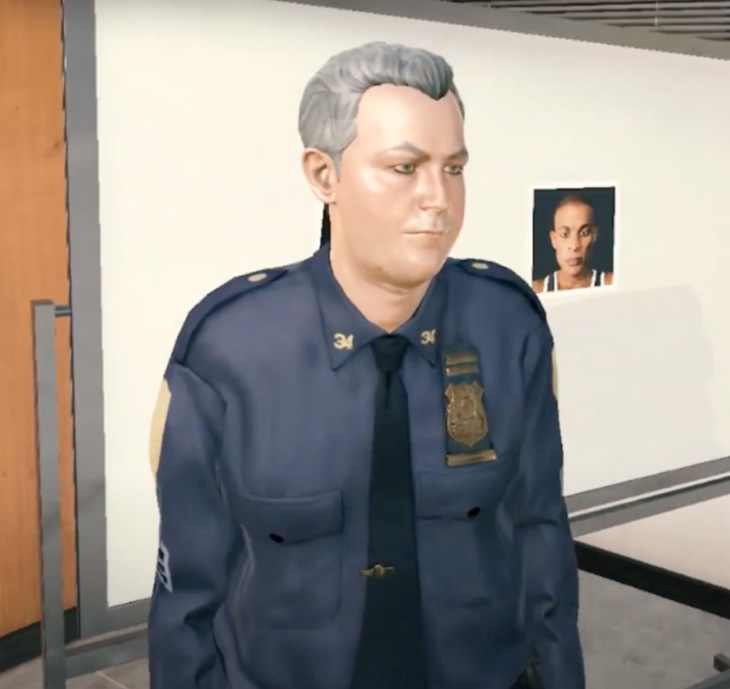
1/4
Embodying the Role
of a Police Officer
Participants start by embodying the role of a police officer in an interrogation room, alongside another officer, questioning a black suspect. Tensions rise as the other officer progressively becomes more threatening and racist in their comments and questioning.





